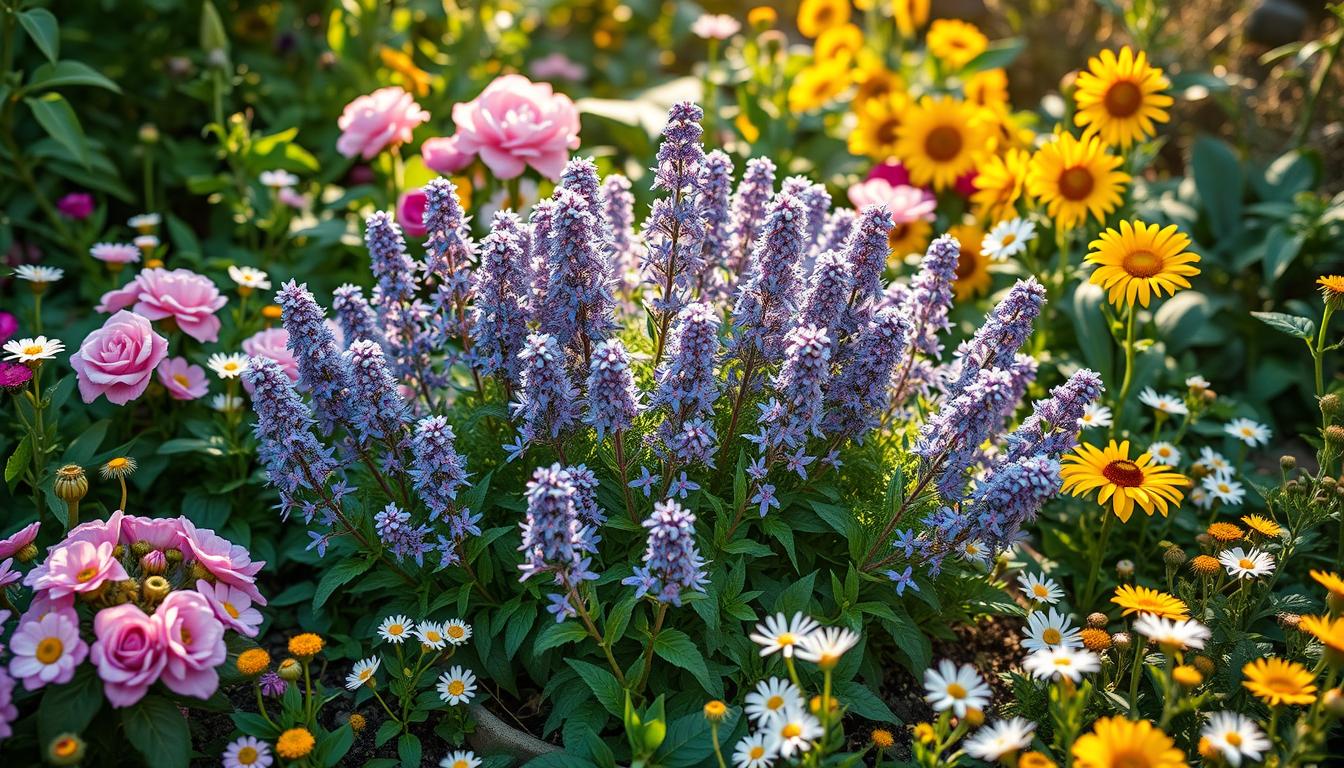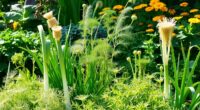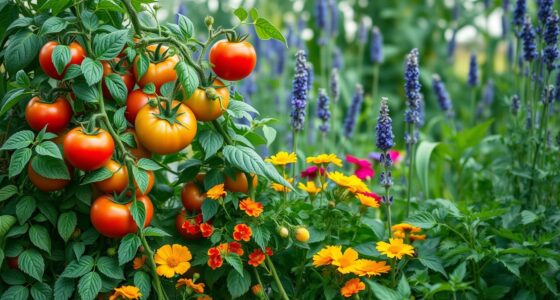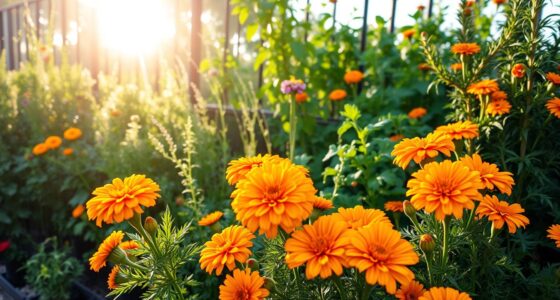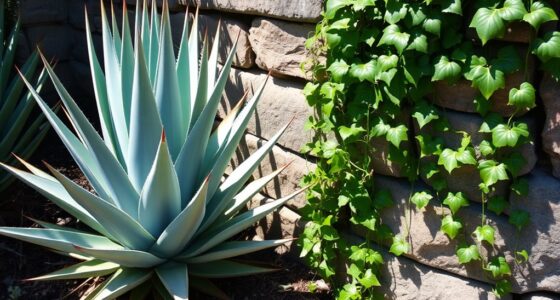Imagine stepping into your garden, where the gentle breeze carries the sweet, soothing fragrance of catmint, and vibrant colors dance before your eyes. As you breathe in the fresh air, you can’t help but appreciate the beauty of nature enhanced by the thoughtful pairing of plants. Catmint, with its stunning blue and lavender flowers, is not only a feast for the senses but also a low-maintenance miracle for your garden. By choosing the best catmint companion plants, you can create a flourishing oasis that thrives harmoniously, adding both aesthetic appeal and resilience to your outdoor sanctuary. As you explore the world of catmint planting companions, you’ll discover how these delightful relationships can transform your garden into a vibrant and inviting space.
Key Takeaways
- Catmint is a hardy perennial known for its aromatic qualities.
- Pairing catmint with the right companions can enhance garden aesthetics.
- Choosing the best catmint companion plants improves plant health.
- Thoughtful combinations can boost resilience against pests.
- Catmint thrives in full sun and is drought-tolerant.
What is Catmint and Why Use It?
The catmint plant, belonging to the mint family, is often mistaken for its cousin, catnip, due to its similar fragrance. This low-maintenance plant stands out for its ornamental qualities, showcasing graceful grey-green foliage and delicate, tubular flowers that bloom throughout late spring into fall. Its striking appearance works well in a variety of landscaping designs, making it a favorite for many gardeners.
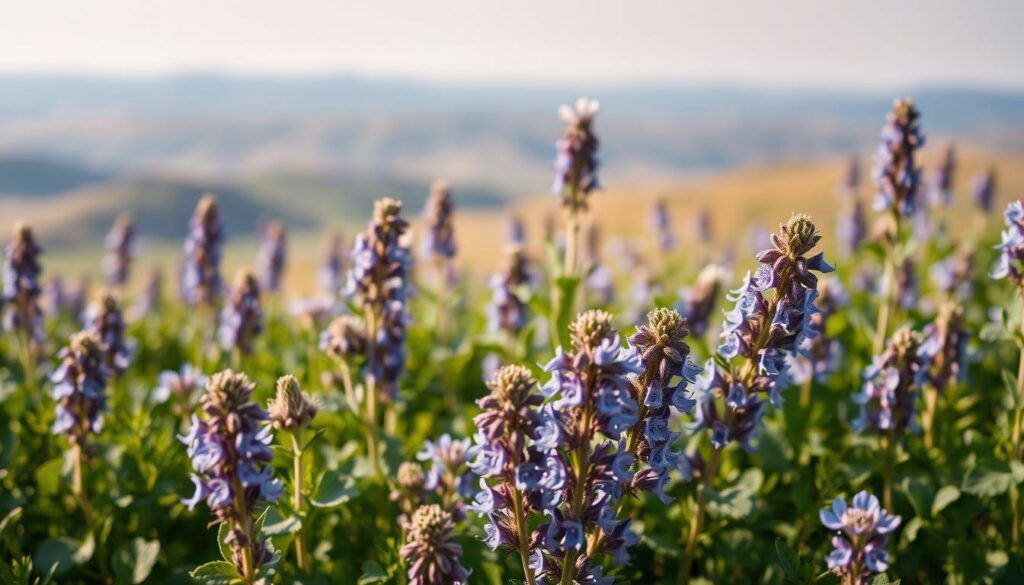
Overview of Catmint
Catmint features several unique characteristics that make it a popular choice among gardening enthusiasts. With a range of growth heights and a striking array of colors during its blooming season, this ornamental plant serves as an attractive addition to gardens. Its ability to thrive in various environments enhances its appeal, allowing you to create beautiful outdoor spaces.
Benefits of Growing Catmint
This plant offers numerous advantages worth considering. One of the most notable catmint benefits is its low maintenance requirement. Once established, this drought-tolerant plant needs minimal care, making it perfect for busy gardeners. Its ability to attract pollinators such as bees and hummingbirds is another significant advantage, contributing positively to the ecosystem. Additionally, catmint has natural deer and rabbit-repelling qualities, keeping your garden less susceptible to these common garden pests.
Ideal Growing Conditions for Catmint
To successfully grow catmint, understanding its specific growing conditions is essential. Paying attention to its soil, sunlight, and watering requirements will promote robust growth and vibrant blooms. Below, you will find detailed insights to help create the best environment for your catmint.
Soil Requirements
Catmint thrives in well-draining soil. It adapts well to various soil types, including rocky and clay soils, but should not retain excess moisture. Meeting the catmint soil needs ensures healthy roots and prevents root rot.
Sunlight Needs
For optimal growth, catmint requires at least 6 hours of catmint full sun daily. This level of exposure is crucial for the flowering process and the overall vitality of this sun-loving plant. Catching those rays not only promotes lush growth but enhances its aromatic quality.
Watering Practices
While known as a drought-tolerant plant, initial care is important. During the first season, regular watering catmint helps establish a strong root system. Once established, minimal irrigation is necessary, even during periods of dry weather. Efficient catmint irrigation will support its rugged nature without the risk of over-watering.
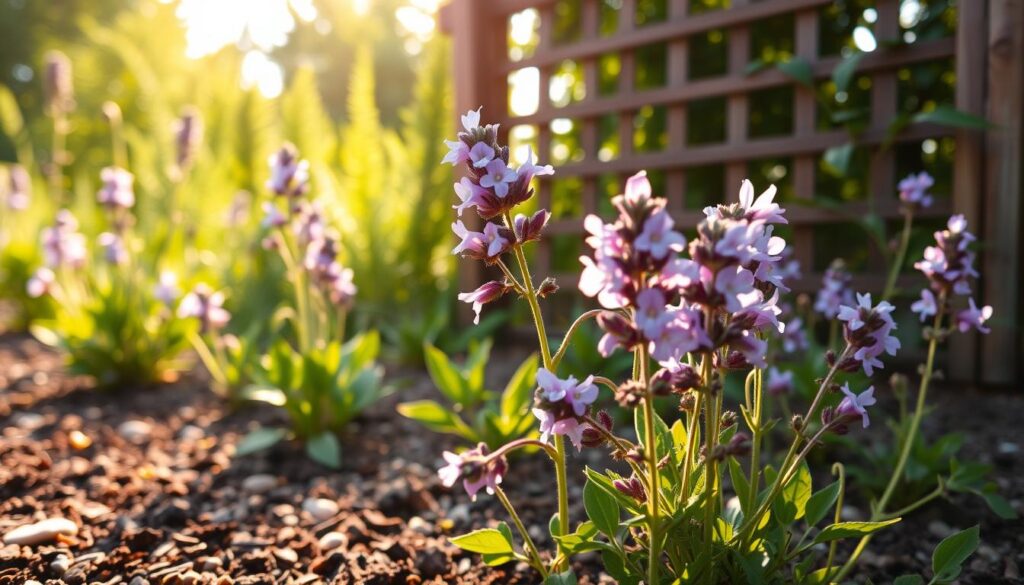
Best Companion Plants for Catmint
Finding the right companion plants for catmint can elevate your garden’s aesthetics and health. The combination of catmint with various partners can create a vibrant, fragrant display while also benefiting your garden environmentally. This section highlights some ideal flower pairings, showcasing the beauty and utility of these resilient plant selections.
Lavender: A Fragrant Match
Catmint and lavender share similar growing conditions, making them a harmonious pairing. Both are drought-resistant and thrive in sunny spots. The delightful scents from these fragrant plants can attract beneficial pollinators, enhancing your garden’s ecosystem. The contrasting colors between lavender and the blue hues of catmint create a visually stunning arrangement, perfect for any garden enthusiast.
Echinacea: Colorful and Resilient
Echinacea, or coneflower, makes a remarkable addition to your garden when paired with catmint. This resilient plant thrives in similar environments, requiring minimal care while adding vibrant blooms. Echinacea benefits from the presence of catmint, as it attracts butterflies and other pollinators. The bright flowers of coneflower and catmint enhance your garden’s visual appeal and provide a lively backdrop for summer days.
Sage: Culinary Delight
Incorporating catmint and sage in your herb pairings is a smart choice for those who love to cook. Sage flourishes alongside catmint, sharing similar habitat needs. This upright herb not only complements the mounding habit of catmint but also provides culinary benefits. You can enjoy fresh sage in meals while benefiting from the aromatic qualities of catmint. This combination offers both functional and aesthetic rewards in your garden.
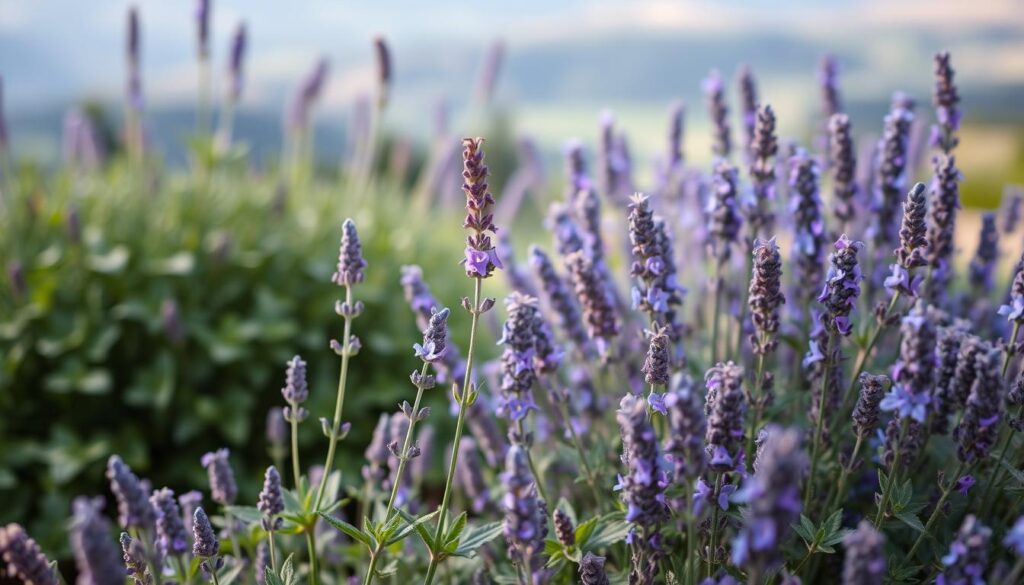
Companion Planting Benefits
Exploring the companion planting advantages offers a fantastic perspective on enhancing your garden’s potential. By integrating plants like catmint with a variety of companions, you can experience improved pest deterrents and create a thriving ecosystem within your outdoor space. Here are some key benefits you can enjoy when adopting this gardening practice.
Improved Pest Resistance
One of the main benefits of companion planting is its ability to provide natural pest deterrents. Certain plant partnerships create a harmonious environment, helping to repel common garden pests. For instance, pairing catmint with robust herbs can significantly reduce pest issues, ensuring your plants remain healthy and vibrant.
Enhanced Growth and Flavor
Plant growth synergy is at the heart of effective companion planting. Herbs like sage and thyme can flourish when grown alongside catmint, resulting in remarkable flavor improvement. This mutual enhancement leads to overall stronger plants, contributing to a bountiful harvest.
Biodiversity Boost
Diverse plantings foster biodiversity in the garden and elevate the resilience of your ecosystem. By strategically choosing companion plants, you can cultivate a more balanced habitat that supports various beneficial organisms. This not only improves soil health but also reduces weed pressure, leading to better productivity in your garden.

Other Herbs That Work Well with Catmint
When planning your herb garden, consider the benefits of combining catmint with other adaptable herbs. These plants can not only enhance the aesthetics of your garden but can also provide a diverse range of flavors. Understanding the unique characteristics of each can help you achieve a flourishing garden.
Thyme: Low Maintenance and Versatile
Growing thyme alongside catmint creates a harmonious partnership. Both thrive in similar conditions, making them ideal companions. Thyme is a drought-tolerant herb that requires minimal water once established, fitting perfectly in your garden’s sunny spots. Its low growth habit serves to fill in gaps while the flavorful leaves enhance various dishes.
Oregano: Flavorful and Drought-Resistant
Oregano, a common choice among gardeners, pairs beautifully with catmint. Known for its vibrant flavor, the oregano benefits include attracting beneficial insects while deterring pests. Both oregano and catmint enjoy sunny, well-drained environments, making them practical choices for a thriving herb garden.
Mint: Caution Needed
While mint is a popular choice for its refreshing taste, it requires careful handling when planted with catmint. Due to its invasive nature, planting mint demands strategic planning to avoid competition between the plants. Following proper mint growing advice ensures you can still enjoy this versatile herb without compromising the health of your catmint.

Flowers That Complement Catmint
When it comes to enhancing your garden, incorporating flowers that complement catmint creates a stunning visual display. These flowering companions not only elevate the aesthetic appeal but also share nurturing requirements that make them ideal partners. Here are three excellent flowers to consider for your catmint garden.
Coneflower: A Bright Addition
The combination of catmint and coneflower adds a vibrant splash of color to your outdoor space. Coneflowers, with their striking purple hues, work seamlessly alongside catmint, enhancing the overall beauty. Both plants thrive in similar conditions, making care and maintenance straightforward.
Gaillardia: Stunning and Hardy
Gaillardia, known for its wonderful array of warm colors, is characterized by its resilience and ability to thrive in dry, sunny conditions. This flower’s attributes allow you to pair it effortlessly with catmint, resulting in a whimsical flair in your garden. Hardy flowers like gaillardia add character and charm, enriching the landscape.
Coreopsis: Long-Blooming Beauty
For those looking to extend the flowering period in their garden, coreopsis provides remarkable long-blooming varieties that work beautifully alongside catmint. The benefits of coreopsis include not only aesthetic longevity but its adaptability to similar growing conditions, ensuring a spectacular flourish throughout the seasons.

Vegetables to Pair with Catmint
Including catmint in your garden can open up a world of successful vegetable pairings that enhance both flavor and growth. This wonderful herb brings a variety of benefits to several vegetables, making it an ideal choice for anyone looking to optimize their garden compatibility.
Tomatoes: A Flavorful Duo
When you pair catmint and tomatoes, you’ll find that this combination works beautifully together. Catmint’s pest-repellent qualities help keep the troublesome insects at bay, which is crucial for a healthy tomato harvest. With aromatic oils that deter pests, your tomatoes can flourish without the constant threat of damage, ensuring a bountiful yield.
Peppers: Spicy Companions
Vegetable pairings with catmint extend to peppers as well. The spicy nature of peppers harmonizes well with the unique characteristics of catmint. By planting them together, you can enhance the flavor profile of the peppers while benefiting from the stress-reducing qualities of catmint. Pepper growth with catmint leads to robust plant health and flavor.
Squash: Thriving Together
Another excellent option is to grow catmint and squash. This combination creates a beneficial environment where catmint provides helpful shade and moisture retention. Such conditions enhance the growth of squash, allowing them to stabilize and thrive. Garden compatibility with catmint and squash is about more than just aesthetics; it plays a pivotal role in creating a productive garden.
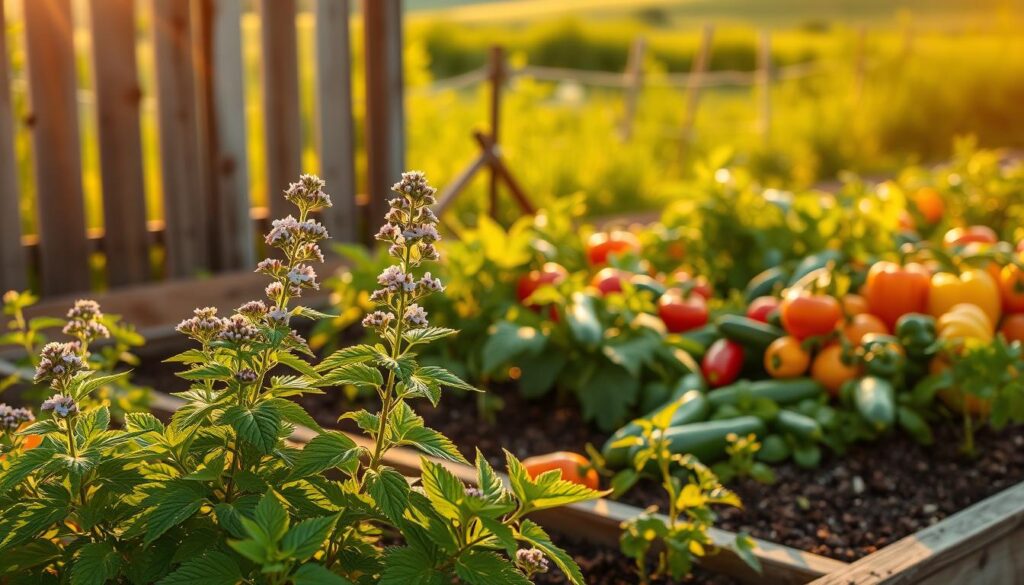
| Vegetable | Benefits of Pairing with Catmint |
|---|---|
| Tomatoes | Deters pests to protect the harvest |
| Peppers | Enhances flavor and health of peppers |
| Squash | Provides shade and moisture retention |
Foliage Plants That Suit Catmint
When it comes to enhancing your garden, selecting the right foliage companions for catmint can create stunning visual effects. Certain plants not only thrive alongside catmint but also provide diverse textures and colors. Here, we explore a trio of excellent options that will help you foster a vibrant community of plants in your landscape.
Lamb’s Ear: Soft and Silvery
Lamb’s ear boasts striking lamb’s ear traits with its fuzzy, silvery leaves. This hardy perennial pairs beautifully with catmint, as both share similar care requirements. The contrast between the soft foliage of lamb’s ear and the upright structure of catmint creates an appealing dynamic in your garden design.
Hostas: Varied Textures
Hostas bring their renowned hosta texture appeal to the mix, offering a range of colors and shapes. While they usually prefer shaded areas, careful placement allows for thriving growth alongside sun-loving catmint. Their broad leaves add depth and interest, making them perfect for complementing foliage in a well-rounded garden.
Ferns: A Lush Contrast
Incorporating ferns in gardens creates a lush backdrop that harmonizes with catmint’s more structured look. The feathery fronds of ferns bring softness and a hint of wildness, enriching the garden’s aesthetic. This combination not only enhances visual interest but also fosters a healthy ecosystem, thriving as valuable foliage companions.
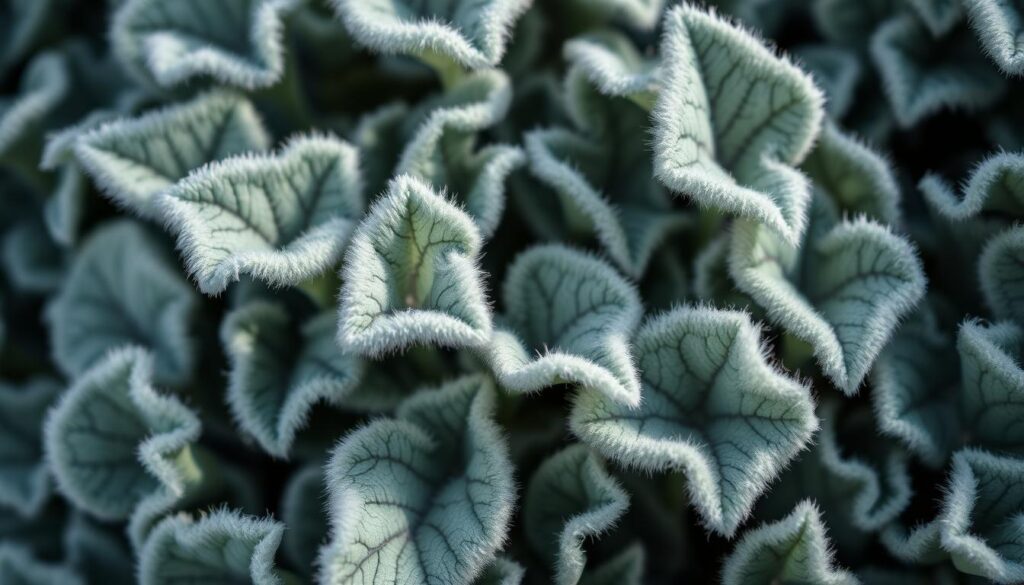
Tips for Successful Companion Planting
For successful companion planting, several key factors contribute to the overall health and productivity of your garden. Focusing on companion plant spacing, timing, and maintenance ensures that plants thrive together. Let’s explore these aspects to enhance your garden layout and achieve companion planting readiness.
Plant Spacing
Adequate companion plant spacing promotes proper air circulation and minimizes the risk of diseases. Understanding the mature size of each plant helps you determine the best spacing. For instance, larger plants like Echinacea should be given more room compared to smaller herbs. This careful consideration results in a flourishing garden where each plant maximizes its potential.
Timing for Planting
Knowing the best planting times is crucial. To ensure that all plants flourish together, check frost dates for your region. Some plants thrive in cooler conditions, while others prefer warmer temperatures. Planting at the right time will support a successful growth cycle, enhancing the benefits of companion plants.
Regular Maintenance
Maintaining companion plants through routine care is essential for optimal growth. Engage in regular garden upkeep by monitoring plant health, weeding, and watering consistently. Trimming and deadheading will encourage continuous growth and extend blooming periods. Adopt a proactive approach to maintaining companion plants to ensure they remain healthy and productive.
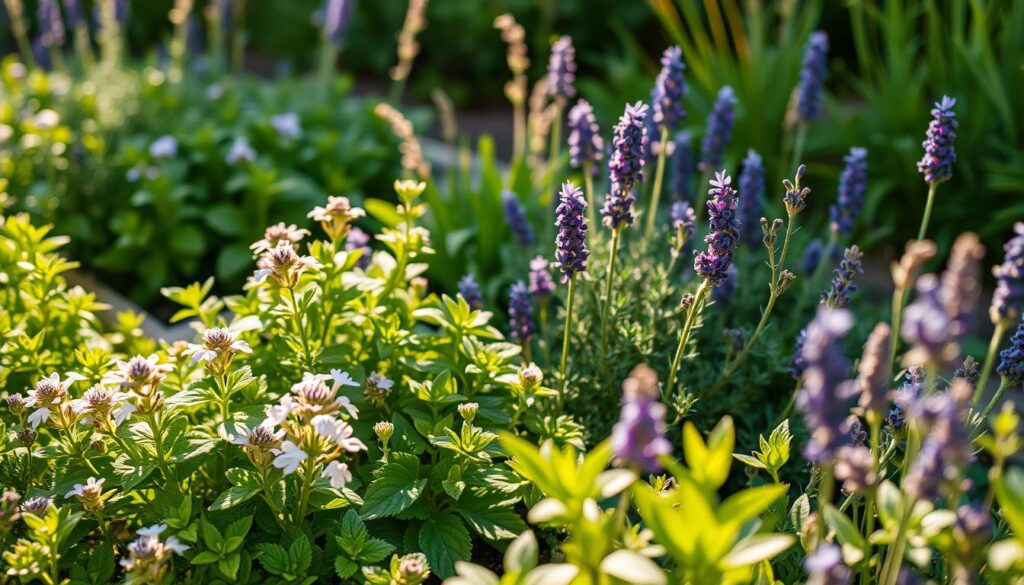
Common Issues in Companion Planting
Companion planting can enhance your garden’s health and productivity. You may encounter several companion planting challenges. Being aware of these issues helps you effectively manage your garden and ensures the health of your catmint and its companions.
Pest Problems
While many companion plants offer benefits like pest management, some might inadvertently attract unwanted insects. Regular monitoring of your plants allows you to identify and address pest issues early. Utilize companion plants known for their repellent properties. This strategy effectively targets specific pests while improving the overall health of your garden.
Disease Management
Garden disease prevention is vital for maintaining the vigor of your plants. Look out for common diseases, such as powdery mildew and root rot. Ensure plants are adequately spaced to promote airflow, which minimizes disease risks. Implementing a proper watering routine along with timely treatments can protect your garden from destructive pathogens.
Nutrient Deficiencies
Companion planting can lead to competition for nutrients among plants. Conducting regular soil tests is an effective way to monitor soil health. This practice informs your nutrient management strategies, ensuring all plants receive the necessary minerals to thrive. By understanding your soil’s composition, you can adjust your approach and enhance the growth of your catmint and its companions.
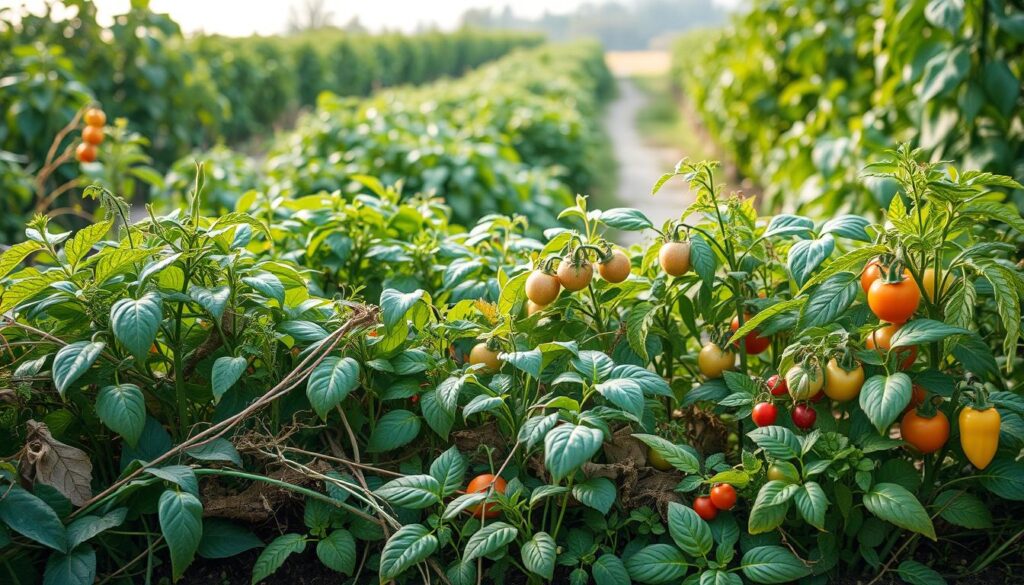
Creating a Companion Planting Plan
When creating a successful companion planting plan, start with evaluating garden space. This assessment lays the groundwork for effective layout planning. Consider aspects such as sunlight availability, soil texture, and the space necessary for plants once they reach maturity. These factors influence the overall health and productivity of your garden.
Assessing Your Garden Space
Review your garden’s dimensions and identify areas that receive different levels of sunlight throughout the day. This information will help you select the best locations for your plants. Soil quality can vary across your patch; conduct tests to understand pH levels and nutrient presence. Use this knowledge to create an optimal environment for your chosen companions.
Choosing the Right Combinations
Successful companion plant selection relies on understanding growth habits and conditions of various plants. Choose optimal plant combinations that thrive together. Take into account blooming periods to ensure visual harmony and an attractive garden. This coordination enhances both aesthetics and ecological balance, supporting plant health and yield.
Seasonal Adjustments
Be proactive in adapting garden layouts with seasonal planting changes. As plants grow, some may outgrow their neighbors or begin to compete for resources. This situation may require you to reposition or replace certain species. Regularly evaluate your garden to maintain healthy growth and allow for thriving companions throughout the seasons.
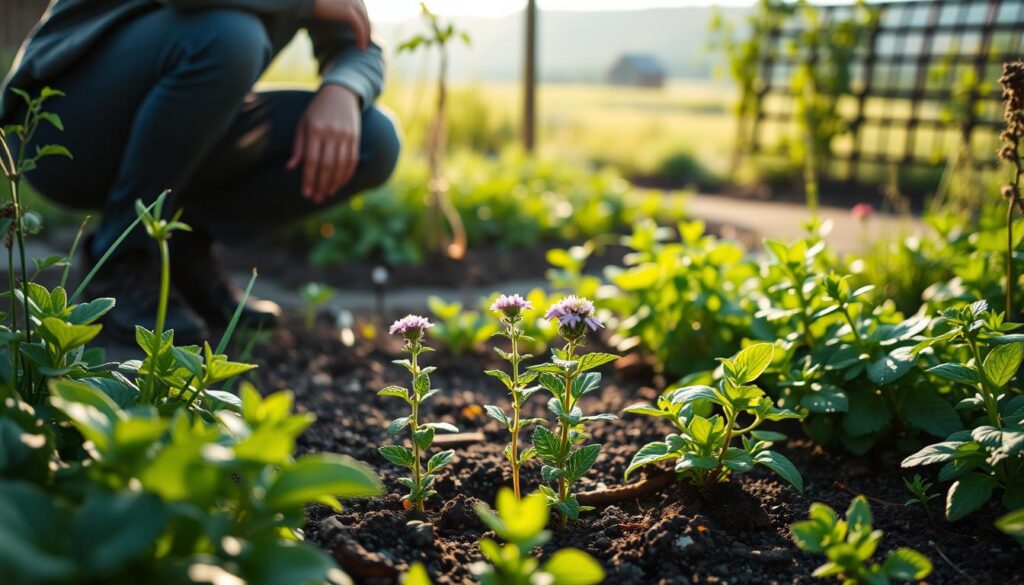
Harvesting and Utilizing Catmint and Companions
Harvesting catmint offers the sweet reward of aromatic leaves and vibrant flowers. Gathering these herbs not only adds flavor to your dishes but also lets you enjoy the beauty of your garden year-round. Proper techniques make the difference in quality and taste.
How to Harvest Catmint
For the best results, engage in harvesting catmint when the morning dew has dried, as this ensures optimal aroma and flavor. Cut the stems just above the leaves. This technique encourages regrowth, allowing you to continue using herbs throughout the growing season.
Using Companion Plants in Cooking
Integrating companion plants such as sage, thyme, and oregano into your culinary repertoire expands your options immensely. The culinary uses of companion plants not only enhance various dishes but also bring out the flavors in your meals. Cooking with herbs elevates everyday recipes, making them more enjoyable and nutritious.
Preserving Your Herbs and Flowers
To maintain the wonderful flavors and aromas of your harvested herbs, consider preserving herbs through several effective methods. Drying techniques allow you to retain potency for months. Freezing herbs provides an easy way to capture seasonal flavors. Alternatively, crafting herbal teas delivers an enjoyable way to experience the essence of your garden year-round.
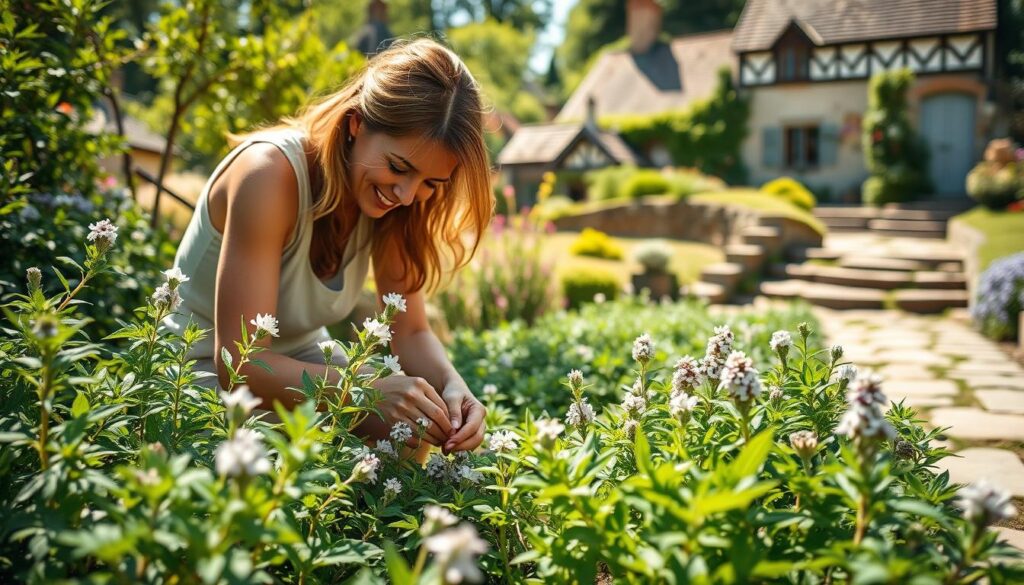
Conclusion: Elevating Your Garden with Catmint
Incorporating catmint into your garden can lead to a multitude of benefits. Not only does it enhance the aesthetic appeal of your space with its vibrant blooms, but it also plays a vital role in creating a balanced ecosystem. When paired with the right companion plants, you’ll experience improved pest resistance, and enhanced growth, making your gardening journey both enjoyable and fruitful. Understanding the benefits of catmint helps you appreciate its versatility in your garden enhancement project.
To ensure your gardening success, pay close attention to the individual growth needs of each plant. Regular maintenance, including proper watering and pruning, can significantly impact their overall performance. Don’t hesitate to experiment with different combinations based on companion planting advice—this approach can reveal surprising synergies among your plants and ultimately lead to a thriving garden environment.
As you venture forth with your catmint and its companions, keep in mind these gardening success tips for optimal results. The journey is as rewarding as the destination, and by nurturing your plants with care and attention, you’ll cultivate a garden that reflects both beauty and bounty. Your commitment today sets the stage for a blossoming future in your gardening endeavors.
